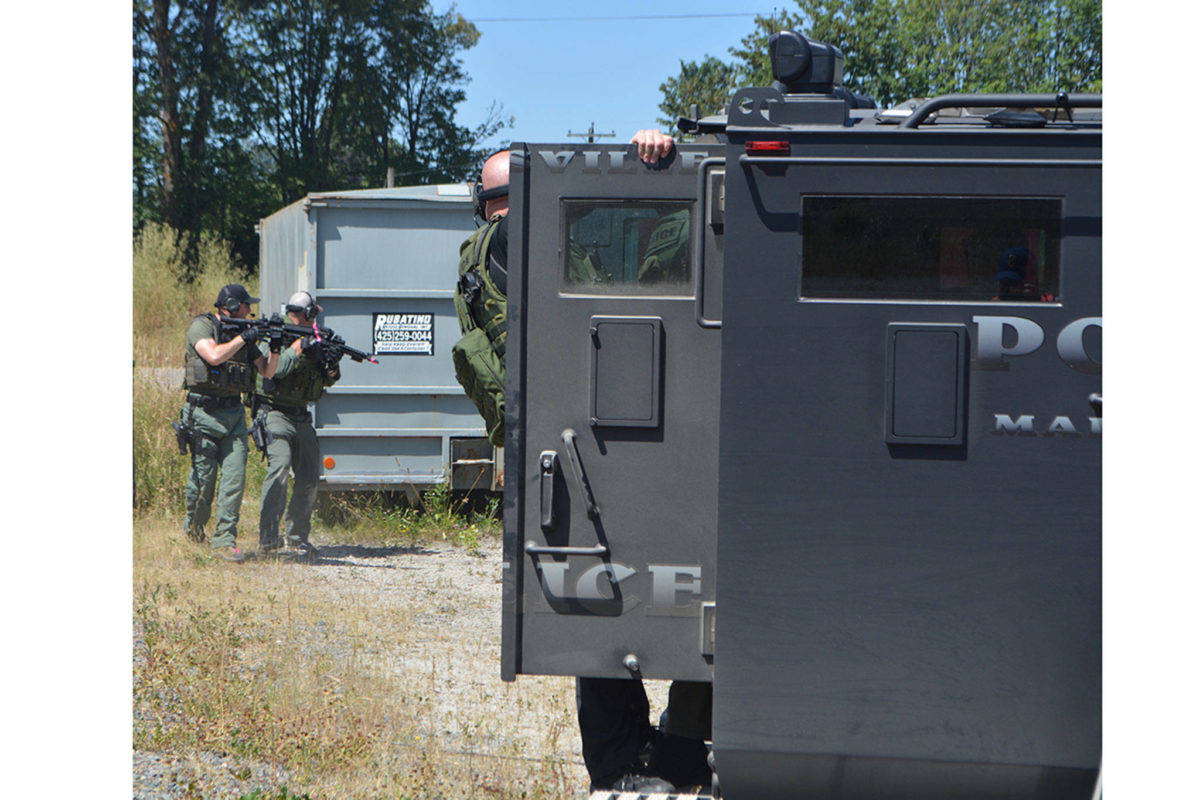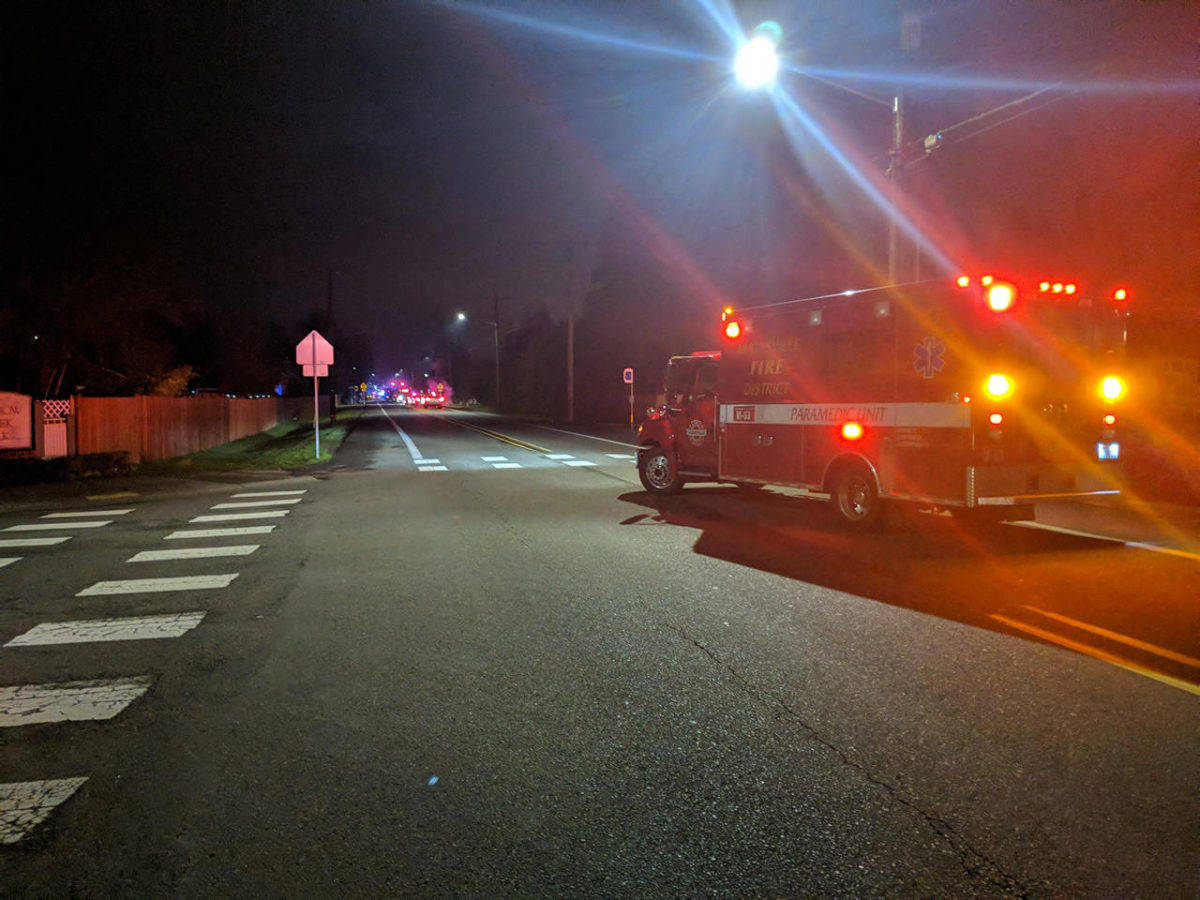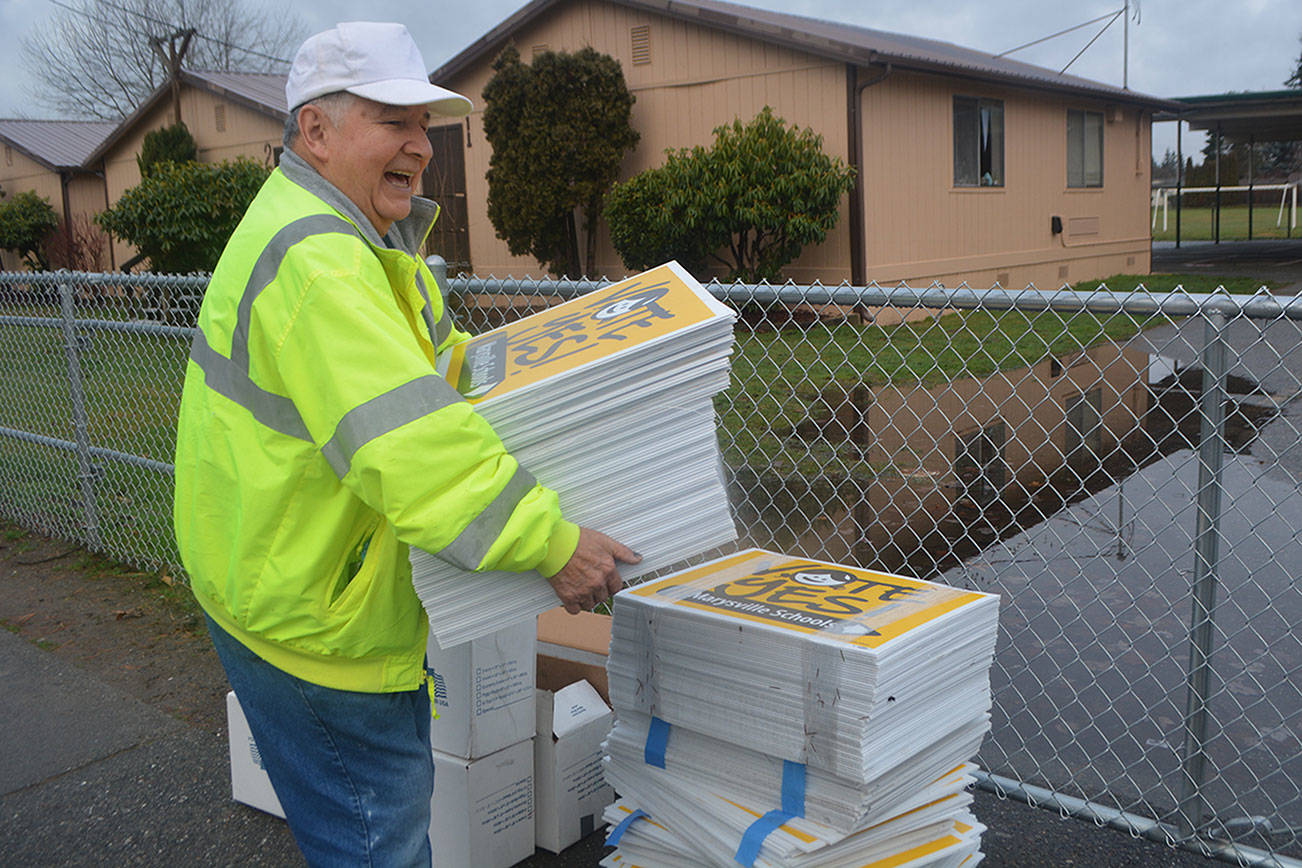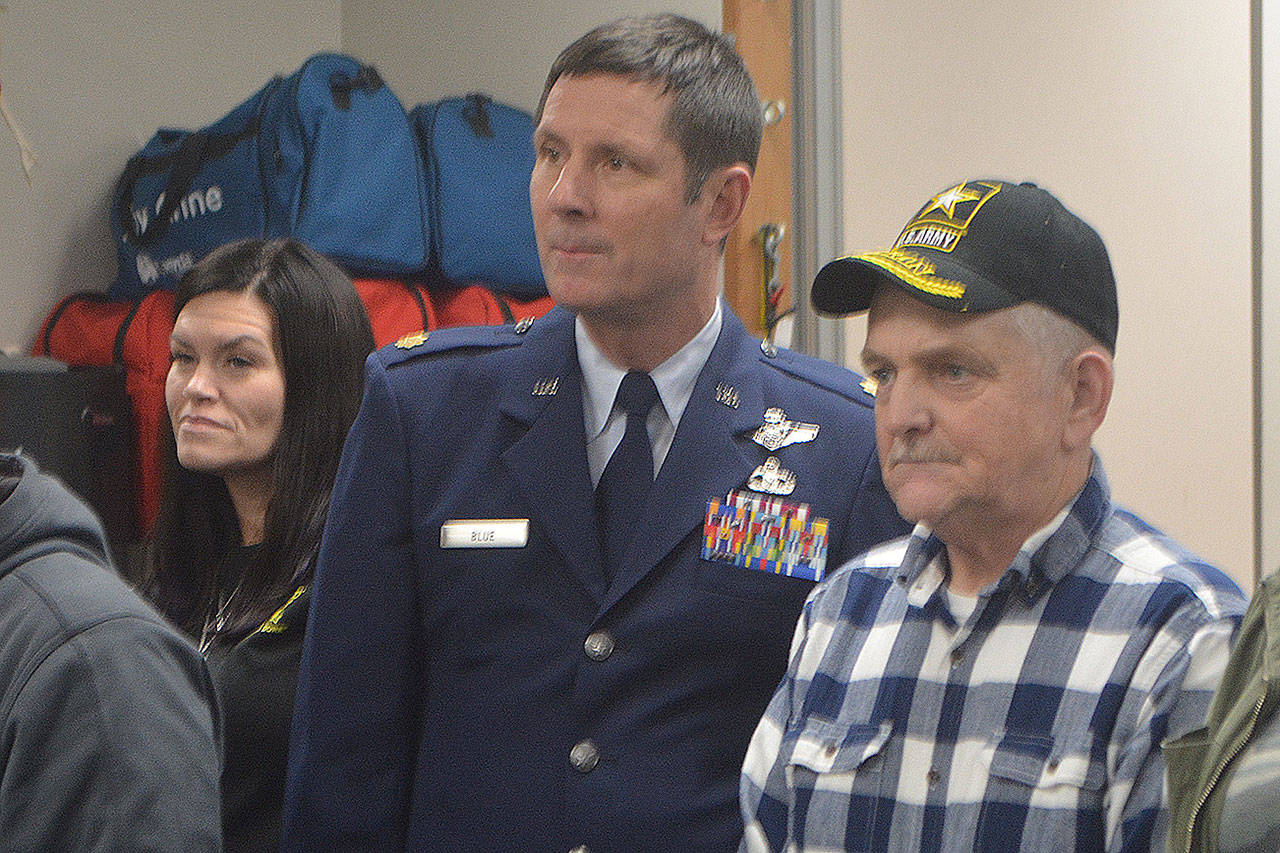MARYSVILLE – A wife calls police, thinking her husband shot himself in their bedroom.
Officers arrive thinking that’s what happened. But then the husband takes a shot at them out the window. They retreat and set up a perimeter.
About 20 minutes later, that same officer is talking on a phone with the shooter, trying to talk him down as a trained negotiator.
That’s the way Marysville police handle such situations, assistant police chief Mark Thomas said. He talked about that incident and two others that have happened recently.
He said voters didn’t really need to pass Initiative 940 in November, which will require police to receive more training. Despite what you might see on TV, the movies or social media, police are experts at de-escalating hostile situations, Thomas said. “Hollywood’s not real,” he said, adding police are successful about 99.6 percent of the time using de-escalation tactics.
The media only covers police when they use lethal force, so the public has an inaccurate view of reality.
“It’s better to talk someone down than to fight them,” Thomas said, adding de-escalation is “part of our DNA.”
Concerning the three local examples, each situation was tense and dangerous. In each things easily could have gotten out of hand. But all three ended in peaceful resolutions.
Continuing on about the first incident at 47th Avenue and 136th Street, Thomas said the man, 50, was very aggressive and seemed to want a “suicide by cop” situation. When the Bearcat armored vehicle arrived, the suspect took a shot at it. He also shot at a police car and ambulance. Police returned fire. Those officers were put on leave, which is standard procedure. “He escalated the situation, and we responded with deadly force,” Thomas said. “Miraculously no one was hurt.”
Unlike the military, police can’t just go in and take care of a situation. They can only react using the same amount of firepower as the perpetrator.
What made this situation even more tricky was the wife was hiding in the back yard in a swimsuit. They apparently had been drinking beer in a hot tub before the first shot was fired Nov. 27. “Officers exposed themselves to great risk to get to her,” Thomas said.
After about 2 1/2 hours of negotiating, the man gave up and came out of the house. Thomas said time is an important factor in negotiations, along with distance. As time goes by, the perp can think things over and sober up. And the farther away, the safer everyone is from getting hurt. But if the suspect doesn’t give them time, police then can’t use de-escalation tactics. “We react to their actions,” Thomas said.
That’s what happened in another incident near Shoultes Elementary School Sept. 20. Jeffrey K. Sims, 37, reportedly tried to stab his wife with a knife when officers arrived after she called 9-1-1. The three officers were placed on administrative leave. Thomas could not talk about that incident because it’s still under investigation by the Snohomish County Multiple Agency Response Team, which investigates cases where police use fatal force. Thomas said officers have a Priority of Life scale. First they protect the victims, then innocent bystanders, then fellow officers, and finally the criminal. “We’re not willing to trade an officer’s life for that guy,” Thomas said of perps.
The next incident happened at The Lodge apartments. There was a struggle over a weapon, and the loser of that battle then went to a closet and pulled out a shotgun. A chase ensued in the complex. One of the men was shot in a leg. When police arrived, the injured man pointed the gun in their direction and pleaded for them to “shoot me.”
“They all held their fire,” Thomas said, adding that since the perp did not use lethal force they didn’t either. “That speaks volumes about the quality of our officers,” he said.
In 20 minutes or less police were able to shoot the suspect with a less-lethal weapon and separate him from his gun. Officers then saved his life by putting a tourniquet on his leg, Thomas said.
Another scary situation took place Nov. 29 in the 18100 block of 25th Avenue NE. Police were dealing with a woman, 18, who stabbed two officers with some office scissors. She was suicidal and had mental health issues, Sgt. James Maples said. She pushed and tried to tackle them first. Not long after they had to deal with the third incident. “They had to set those emotions aside” and respond to the next one, Maples said.
Maples was actually shot in an incident a few years ago when the suspect did not give police any time to try to de-escalate the situation. The suspect fired shots from Lake Stevens to Marysville at various targets. Maples added that officers also have to de-escalate and negotiate differently depending on if the suspect is drunk, high on drugs or it’s a mental health case. All officers receive de-escalation training at the police academy.
The third incident involves a man, 33, who drank about 10 beers Dec. 4. He threatened his wife numerous times with a shotgun and also threatened suicide. Three children were asleep in the house. They were the No. 1 priority as the wife exited the house through a garage. “We’re here for the long haul,” Thomas said he told his fellow officers. “There was a roller coaster of emotions.”
He said one thing he learned from the deadly shooting at Marysville-Pilchuck High School four years ago was “not to make more trouble for kids.” So they did not try to force the suspect out with flash bangs or anything like that. But if it ended up they needed to rescue the kids, “We’d do what we have to do,” Thomas said.
They did get a search warrant just in case they needed to do a forced entry. But by investing some time, the suspect was willing to give up. As to why the public has the misperception about police violence, Thomas said social media has a lot to do with it.
“A three-second video clip” does not tell the whole story, he said. Even news media doesn’t take the time anymore to find out accurate information because of the desire to have the news first. People want to know right now, and what they give up is accurate information. Facts are gathered during the investigation; anything before that is speculation. The other thing about public perception is police don’t say much when things go right. “We don’t do a good job of tooting our own horn,” Thomas said.









